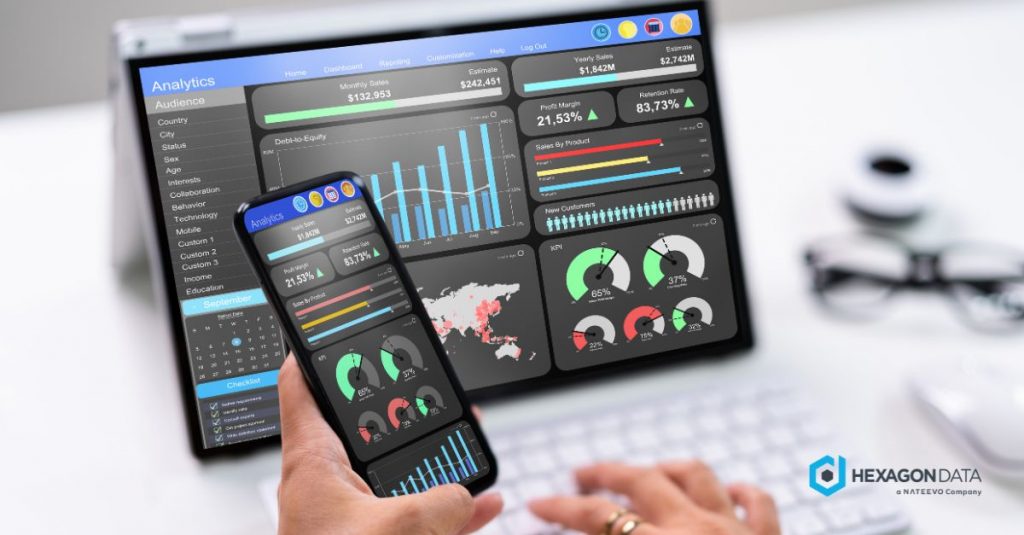|
Listen to the Article
|
In the ever-evolving landscape of marketing, where strategies are shaped by data more than ever before, a new powerhouse has emerged to lead the charge: First-Party Data (1PD). As businesses seek deeper connections with their audiences and strive for more effective targeting, the significance of 1PD cannot be overstated. In this era of personalized experiences and heightened privacy concerns, harnessing the potential of 1PD has become a pivotal aspect of crafting successful marketing strategies.
Gone are the days when generic mass marketing held sway; today’s consumers expect tailored interactions that resonate with their individual preferences and needs. This shift has not only prompted marketers to delve deeper into understanding their customers but has also fueled the growing importance of 1PD. In this article, we will explore the multifaceted dimensions of 1PD and its pivotal role in reshaping marketing strategies.
Join us as we dive into the heart of data-driven marketing and unveil the power of first-party data. From its definition and collection methods to its role in enhancing personalization and building trust, we’ll dissect the nuances that make 1PD an indispensable asset. As we traverse the following sections, you will gain insights into how businesses can leverage 1PD to create lasting connections, navigate privacy concerns, and ultimately chart a course toward marketing success in a rapidly changing digital landscape.
Understanding First-Party Data (1PD)
In the modern digital age, data serves as the cornerstone of effective marketing strategies, and among the various data types available, First-Party Data (1PD) stands out as a foundational pillar. At its core, 1PD refers to the information collected directly from your own audience, customers, and users. This data is voluntarily shared by individuals through their interactions with your brand’s website, applications, social media, and other touchpoints. Unlike third-party data, which is acquired from external sources, 1PD originates directly from the source – your consumers themselves.
Types of First-Party Data:
1. Behavioral Data: This encompasses a wide range of actions your users take, such as pages they visit, products they view, and links they click. Behavioral data helps you understand user preferences, interests, and intent, enabling you to tailor your marketing efforts accordingly.
2. Transactional Data: Details of customer purchases, order history, and transactional interactions provide valuable insights into buying patterns and preferences. This information aids in refining product recommendations and optimizing cross-selling and upselling strategies.
3. Demographic and Psychographic Data: Information about your audience’s age, gender, location, interests, and lifestyle helps you segment your market more effectively. This segmentation enables you to create targeted campaigns that resonate with specific groups.
4. Interaction Data: This includes data from customer support interactions, surveys, feedback forms, and other direct communications. Understanding how customers engage with your brand on a personal level can help tailor engagement strategies and improve customer satisfaction.

The Significance of First-Party Data:
Collecting and utilizing 1PD is a strategic advantage for several reasons:
1. Accuracy and Reliability: Since 1PD comes directly from your audience, it tends to be more accurate and reliable compared to third-party data, which can be outdated or incomplete.
2. Tailored Marketing: With a clear understanding of user behaviors, preferences, and interactions, you can create highly personalized marketing campaigns that resonate with individual customers, fostering stronger connections.
3. Audience Insights: 1PD offers a window into the minds of your audience, providing actionable insights for product development, content creation, and overall business strategies.
4. Compliance and Trust: In an era where data privacy is paramount, relying on 1PD enhances compliance with regulations like GDPR and CCPA. Using data that users willingly provide builds trust and transparency.
As the digital ecosystem continues to evolve, 1PD has emerged as an essential tool for marketers seeking to thrive in this landscape. The ability to gather, analyze, and act upon data collected directly from customers empowers businesses to build meaningful relationships and deliver tailored experiences. In the subsequent sections, we will explore how harnessing the potential of 1PD can enhance personalization, address privacy concerns, and redefine the way marketing strategies are formulated.

Enhancing Personalization and Customer Experience
In an age where consumers are inundated with marketing messages from every direction, personalization has become the key differentiator that sets successful brands apart. First-Party Data (1PD) plays an instrumental role in unlocking the full potential of personalization and elevating the customer experience to unprecedented heights.
Crafting Tailored Experiences:
1PD serves as a treasure trove of insights into individual preferences and behaviors. By analyzing this data, marketers gain a comprehensive understanding of each customer’s journey, allowing them to create tailored experiences at every touchpoint. Whether it’s a personalized email suggesting products based on previous purchases or a website homepage that showcases content aligned with a user’s interests, 1PD empowers marketers to curate interactions that feel uniquely relevant to each individual.
Hyper-Targeted Campaigns:
The granular nature of 1PD enables the creation of hyper-targeted marketing campaigns. By segmenting your audience based on their behaviors and characteristics, you can deliver messages that resonate deeply. For example, an e-commerce company can send promotions to customers who have abandoned their shopping carts, along with personalized incentives to nudge them towards completing the purchase. Such campaigns not only drive conversions but also demonstrate that your brand understands and caters to individual needs.
Predictive Analytics and Recommendations:
Leveraging 1PD allows businesses to employ predictive analytics and recommendation algorithms. By analyzing historical behaviors and patterns, you can predict future actions and preferences. This capability enables platforms to offer relevant content or product recommendations in real-time, enhancing the overall user experience. Streaming services like Netflix and music platforms like Spotify have mastered this art, offering personalized content suggestions that keep users engaged and satisfied.
Building Emotional Connections:
Personalization extends beyond transactional interactions; it’s about forging emotional connections. When customers receive messages or offers tailored to their specific interests, it conveys a sense of care and understanding. This, in turn, fosters brand loyalty and a positive perception. By consistently providing experiences that cater to individual needs, you transform customers into brand advocates who willingly spread the word about their exceptional interactions.
In essence, the role of 1PD in enhancing personalization and customer experience cannot be overstated. The ability to harness this data enables marketers to move beyond generic marketing approaches and connect with customers on a deeply personal level. As we delve deeper into the world of First-Party Data, the next section will address the critical topic of navigating privacy concerns and building trust – a necessary step for maintaining successful customer relationships in the digital era.

If you are interested in personalization you can go futher in: Personalization, artificial intelligence and machine learning
Navigating Privacy Concerns and Building Trust
As the digital landscape continues to evolve, the issue of data privacy has taken center stage. Consumers are increasingly aware of how their data is being collected and used, leading to heightened concerns about privacy and security. In this context, First-Party Data (1PD) offers a unique advantage by allowing businesses to navigate these concerns and build trust with their audience.
Transparency and Consent:
One of the key ways 1PD addresses privacy concerns is through transparency and consent. When users willingly provide their data, knowing exactly how it will be used, it establishes a foundation of trust. By clearly outlining data collection practices and obtaining explicit consent, brands can foster a sense of security among their customers.
Regulatory Compliance:
With regulations like the General Data Protection Regulation (GDPR) and the California Consumer Privacy Act (CCPA) in place, businesses are required to handle customer data responsibly. Utilizing 1PD enables companies to stay compliant with these regulations, as the data is directly obtained from individuals who have opted in. This reduces the risk of inadvertently using non-compliant or questionable data sources.
Differentiating from Third-Party Data:
In contrast to third-party data, which often comes from external sources and lacks transparency, 1PD is sourced directly from interactions with your brand. This distinction is important for building trust. Consumers are more likely to feel comfortable sharing data with a brand they have a direct relationship with, as opposed to data brokers or unknown entities.
Data Minimization and Security:
Collecting 1PD encourages a practice of data minimization – collecting only the necessary information to achieve specific goals. This approach aligns with privacy principles and demonstrates respect for users’ data. Furthermore, since you control the data collection process, you can implement robust security measures to safeguard sensitive information, bolstering trust among users concerned about data breaches.
The Trust Advantage:
Building trust is not just a legal or ethical obligation; it’s a competitive advantage. Brands that prioritize user privacy and demonstrate responsible data handling practices are more likely to win the loyalty of their audience. Trust forms the bedrock of strong, enduring customer relationships. When customers feel their data is treated with care and respect, they are more inclined to engage, share feedback, and even advocate for the brand.
In summary, 1PD offers a solution to the privacy concerns that have arisen in today’s data-driven world. By directly engaging with your audience and practicing transparent, responsible data collection and usage, businesses can create an environment of trust. In the final section, we will conclude by underlining the significance of integrating First-Party Data into broader marketing strategies and the path forward for businesses seeking to leverage this invaluable asset.
Conclusion
The journey into the realm of First-Party Data (1PD) has revealed a profound shift in the landscape of modern marketing strategies. As businesses adapt to the evolving digital ecosystem, the significance of 1PD has risen to the forefront, reshaping the way brands connect with their audiences and navigate the intricacies of data-driven campaigns.
From understanding the nature of 1PD to harnessing its potential for enhanced personalization and customer experiences, we’ve explored the multi-faceted dimensions that make 1PD an invaluable asset. The ability to create tailored interactions, hyper-targeted campaigns, and predictive recommendations has allowed brands to forge meaningful connections that resonate on a personal level.
In a time marked by heightened privacy concerns, 1PD offers a path forward. By focusing on transparency, obtaining explicit consent, and adhering to regulatory standards, businesses can navigate the delicate balance between data utilization and user trust. As trust becomes a distinguishing factor, brands that prioritize ethical data practices are poised to stand out and cultivate lasting customer loyalty.
The journey of integrating 1PD into marketing strategies does not end here. Instead, it marks the beginning of a new era in which businesses use their own data to inform decisions, drive innovation, and elevate customer experiences. By tapping into the insights provided by 1PD, brands can anticipate market trends, respond to customer needs, and tailor strategies that lead to sustained success.
As technology continues to evolve and consumer expectations shift, the importance of 1PD will only continue to grow. In embracing this evolution, businesses can not only elevate their marketing efforts but also redefine their relationship with customers. By recognizing the power of First-Party Data, you’re positioning your brand at the forefront of a data-driven future, where understanding, personalization, trust, and success intertwine to create remarkable marketing strategies.




